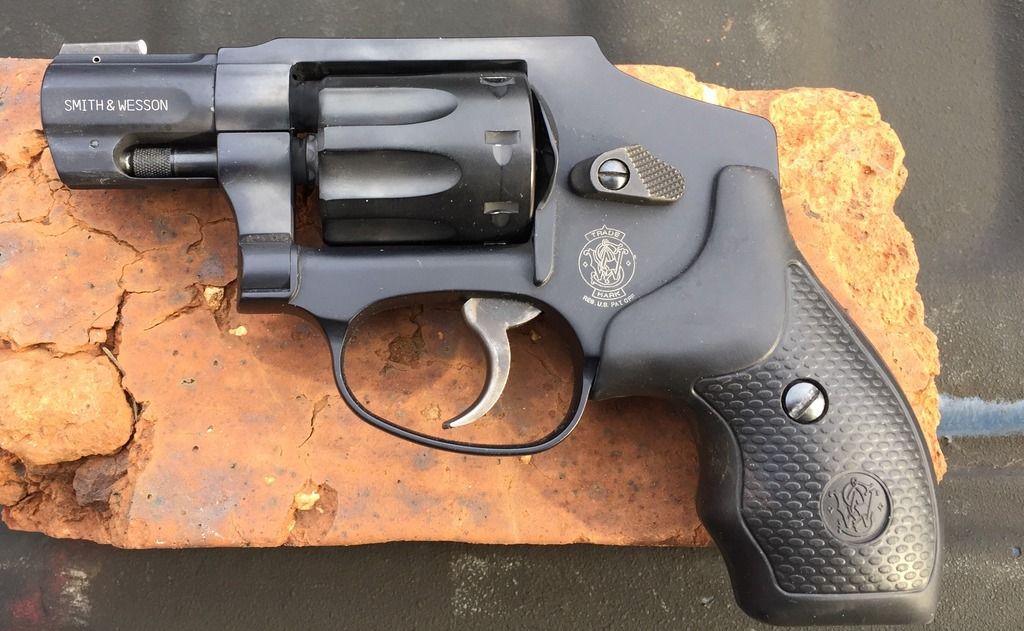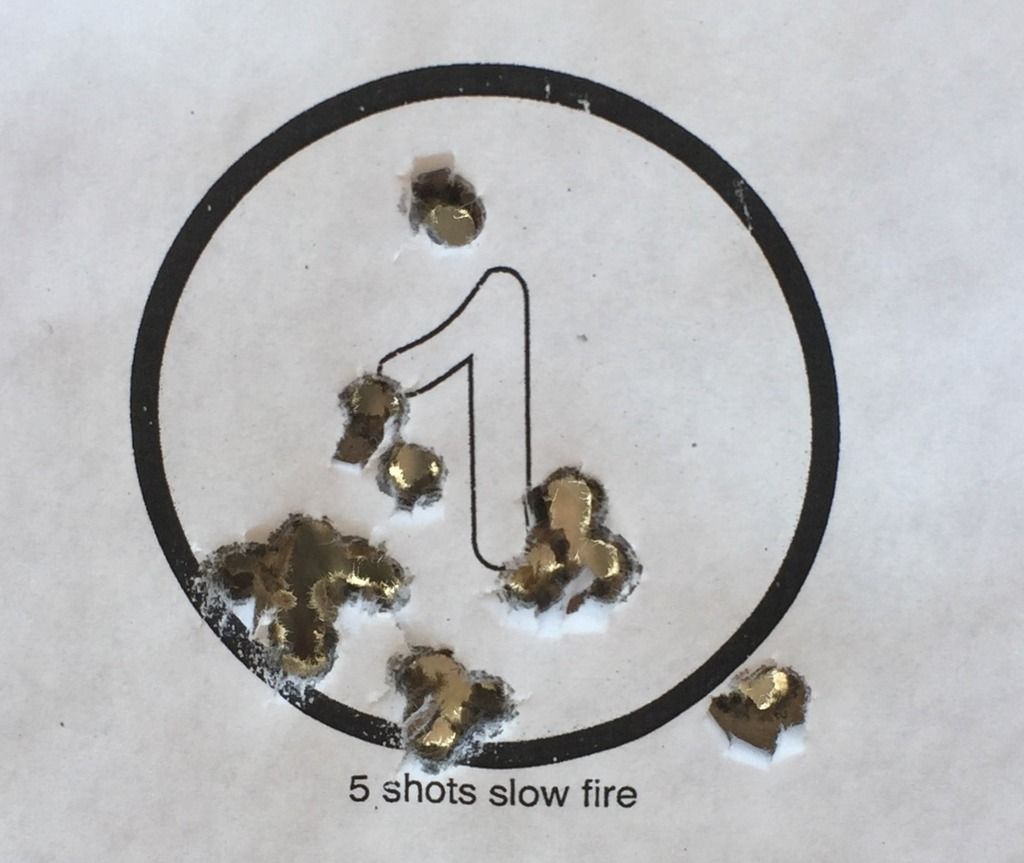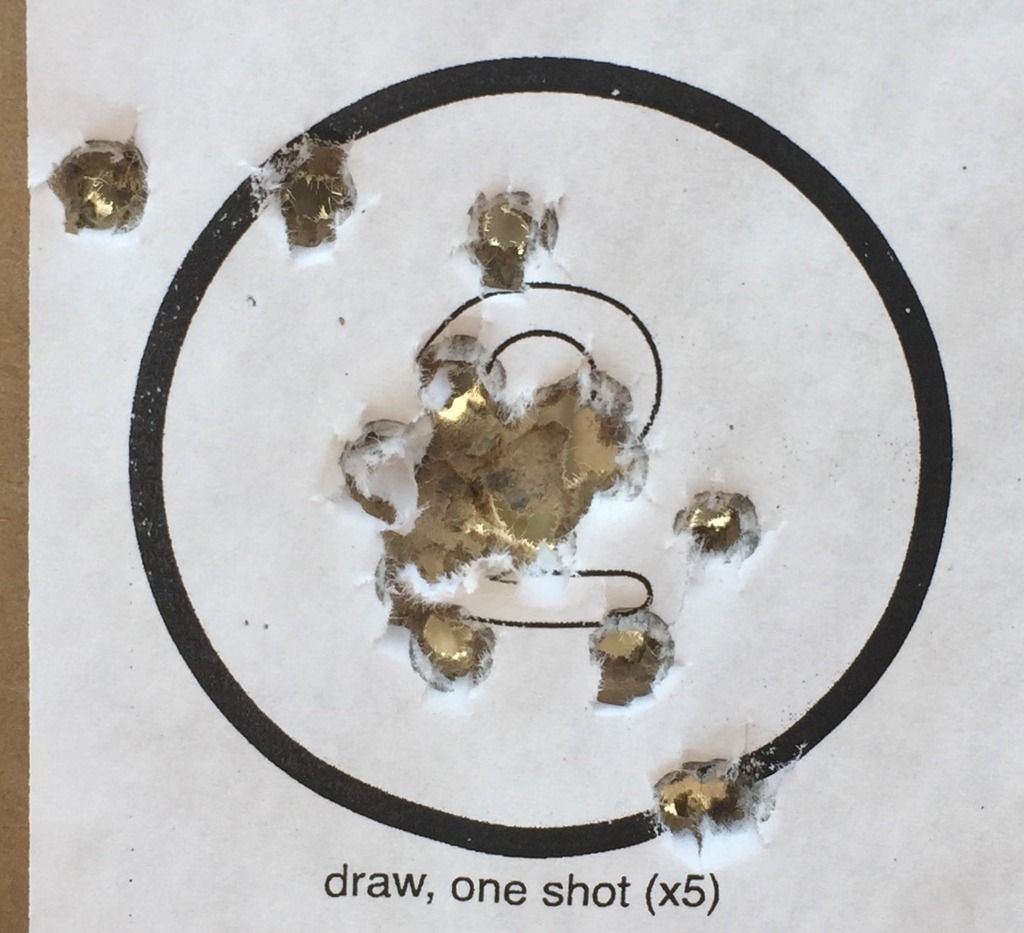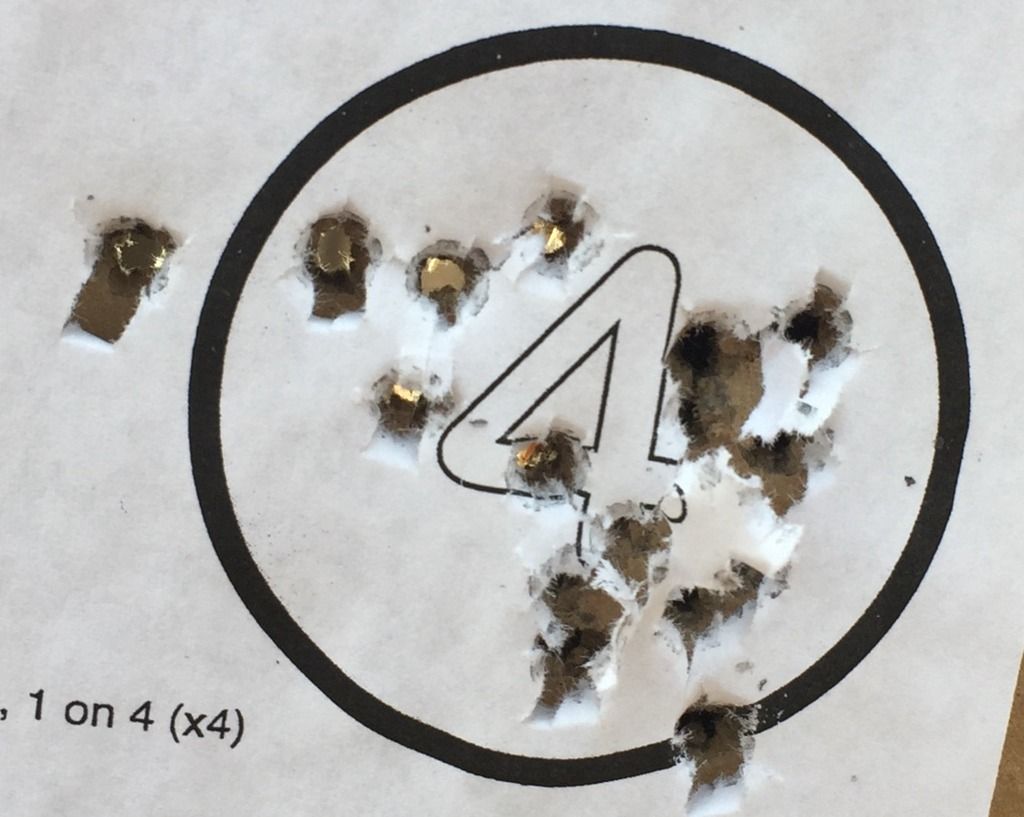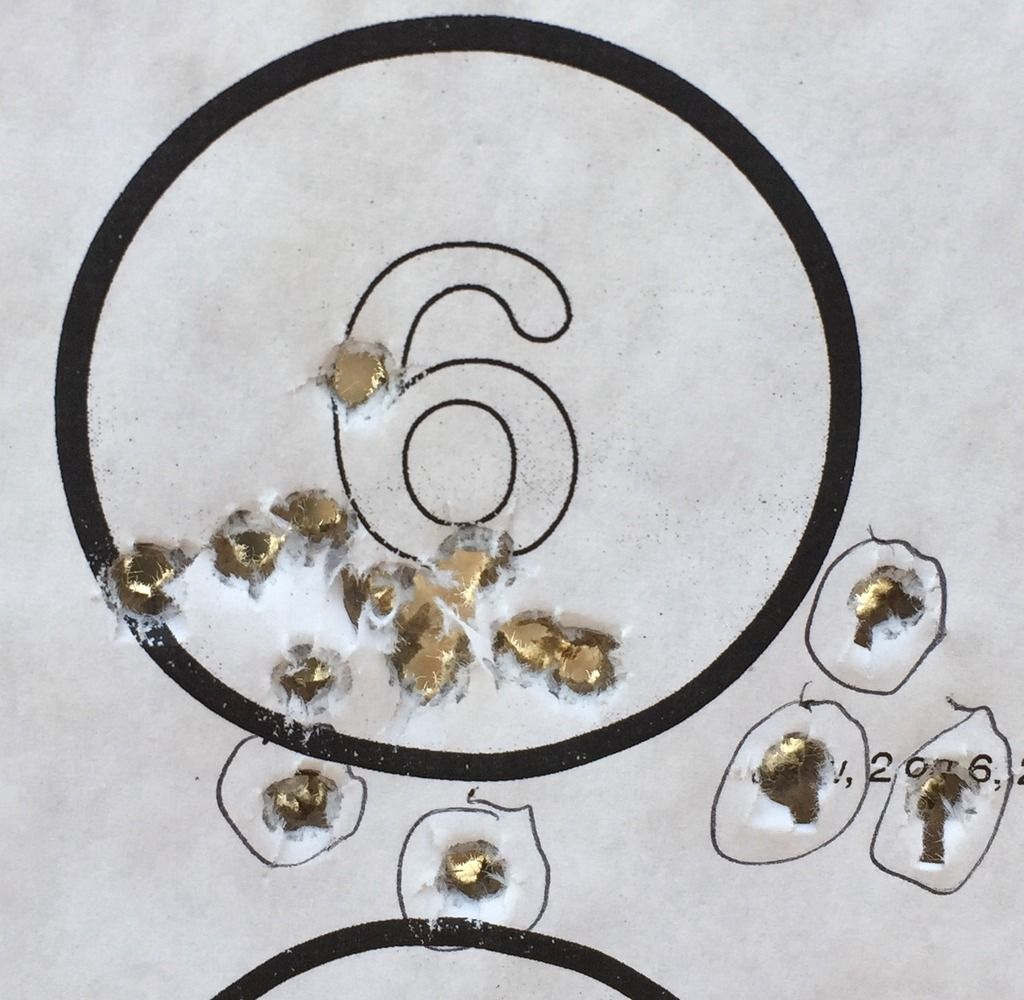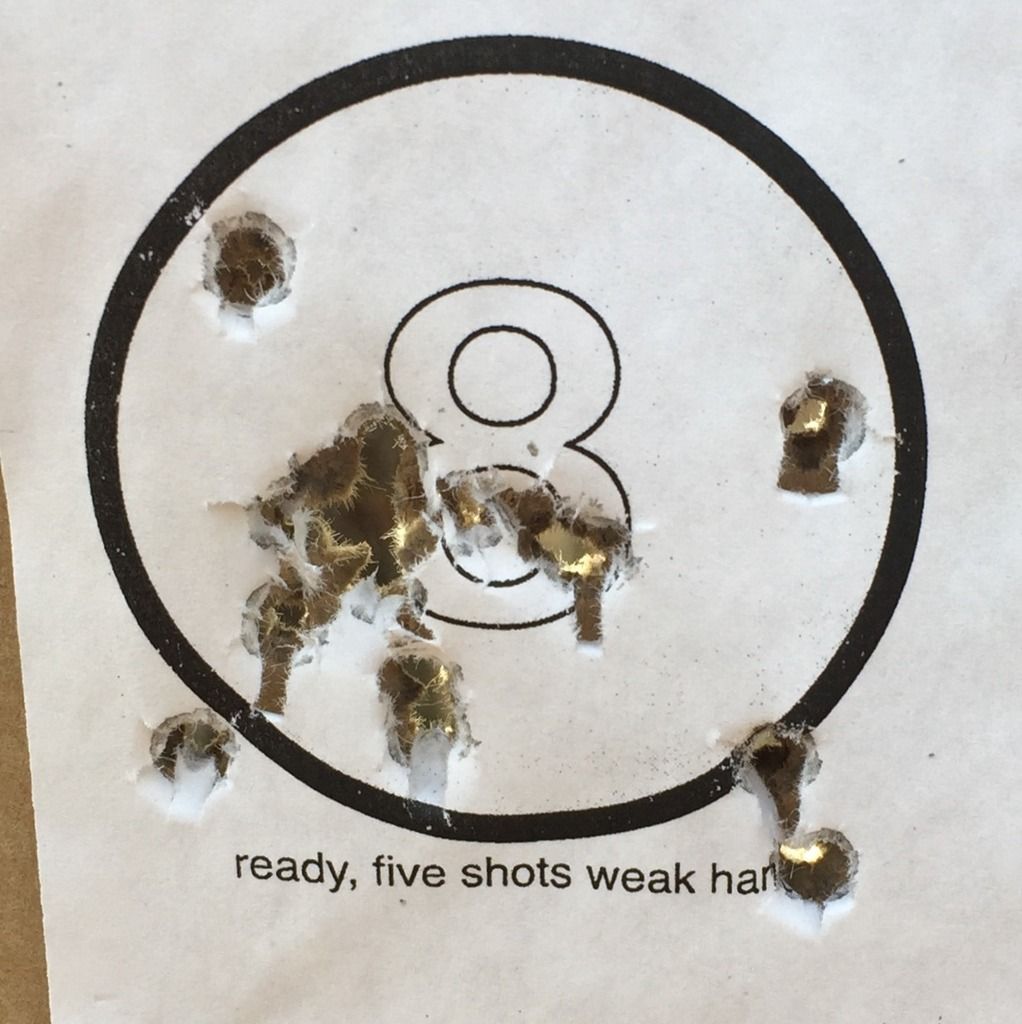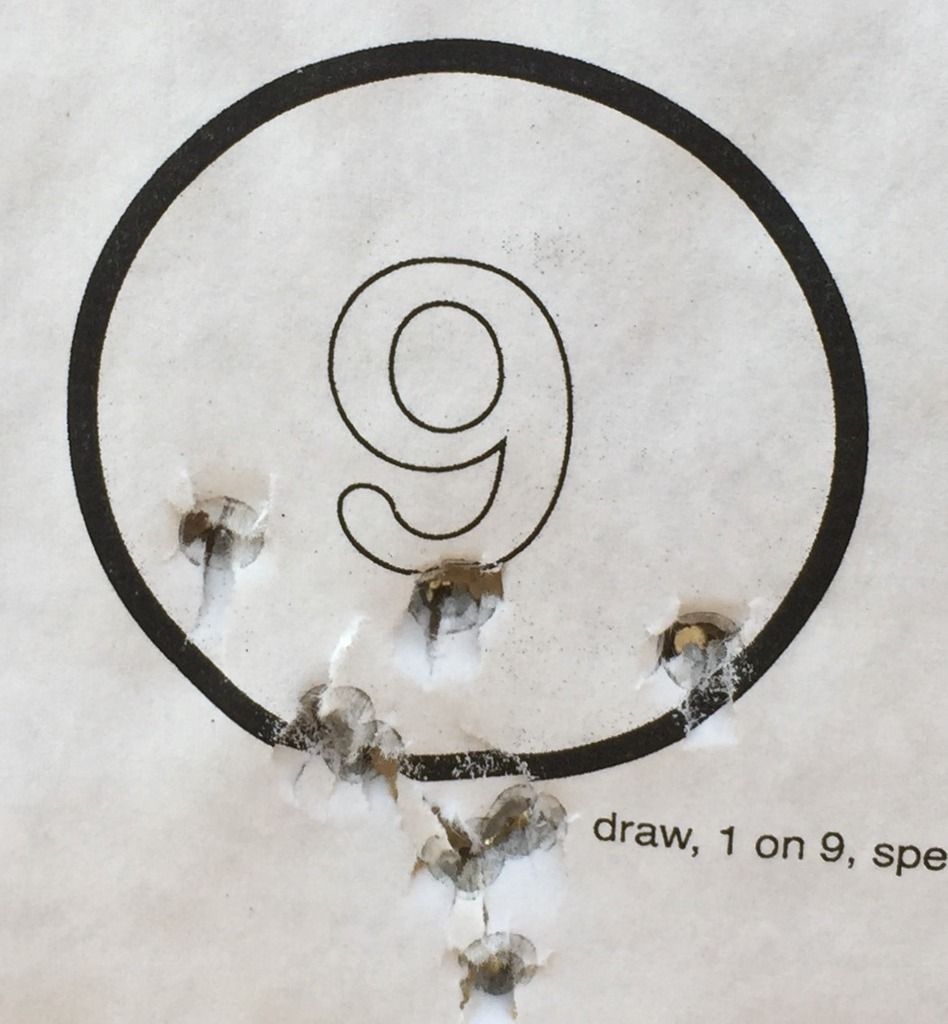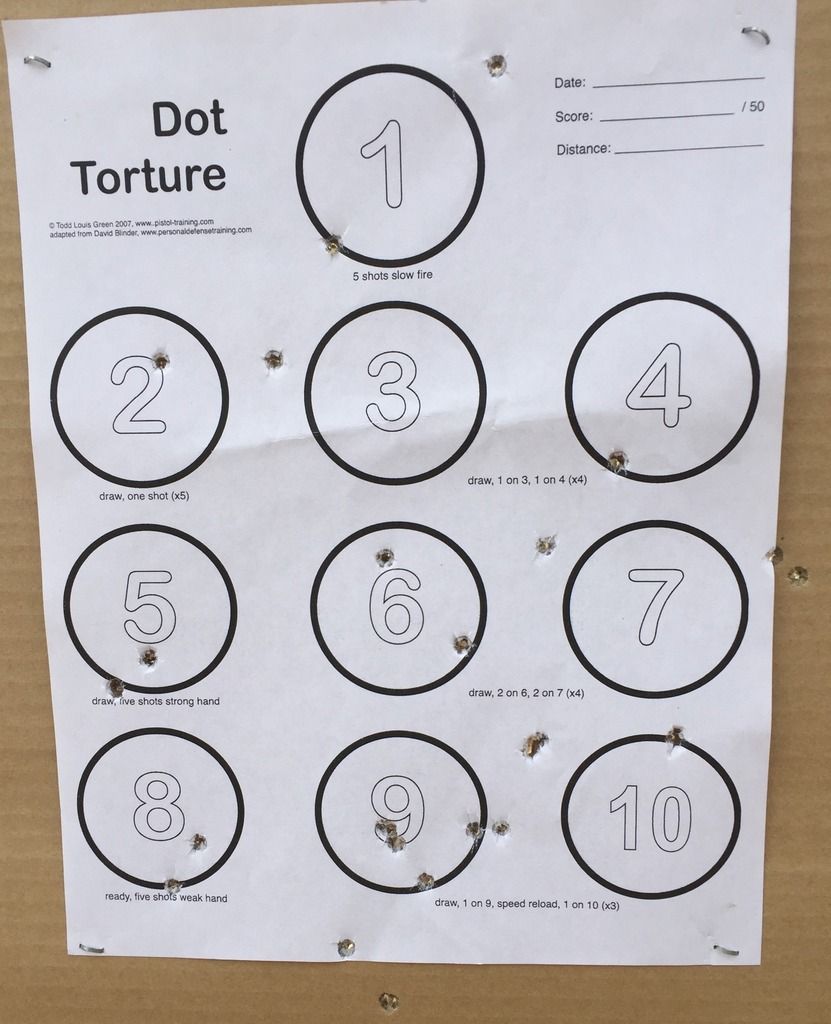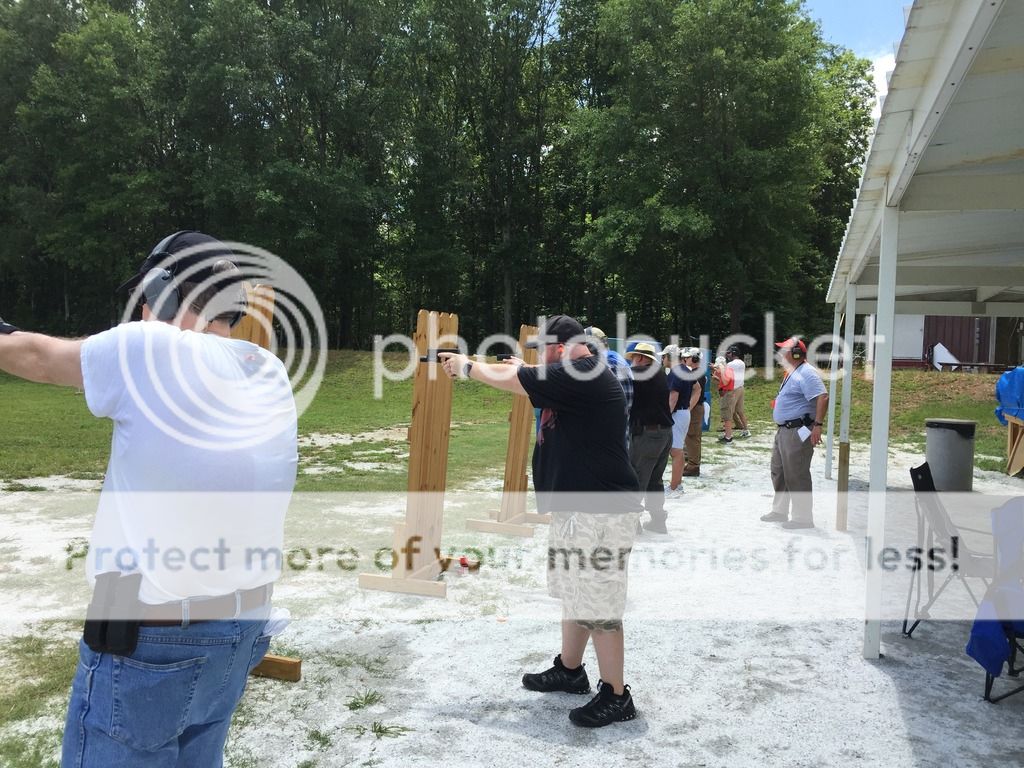 |
| Lee observing students shooting from cover at the twenty five yard line. |
The class ran for about eight hours and required roughly 350 rounds of ammo. The drills ran from three yards to twenty five yards, required the student to draw from a holster, shoot freestyle, dominant hand, non dominant hand, from a standing or kneeling position, and from cover. Some drills required shooting a single target while others required shooting two targets or repositioning oneself in order to not hit a non-threat target.
The class started off with the usual sign-in and appropriate waivers. Once that business was out of the way we went through a quick introduction, safety rules, and medical plan. On that note, if you're planning on taking a class that doesn't have some sort of medical plan, contact info for EMS, and an emergency plan, you might want to reconsider taking that that class. While range injuries are not common, you don't want to be the one to discover that the instructor and/or host hasn't made provisions for emergency treatment and possible evacuation while you've developed an unplanned leak or some other form of trauma that has the potential to be life changing.
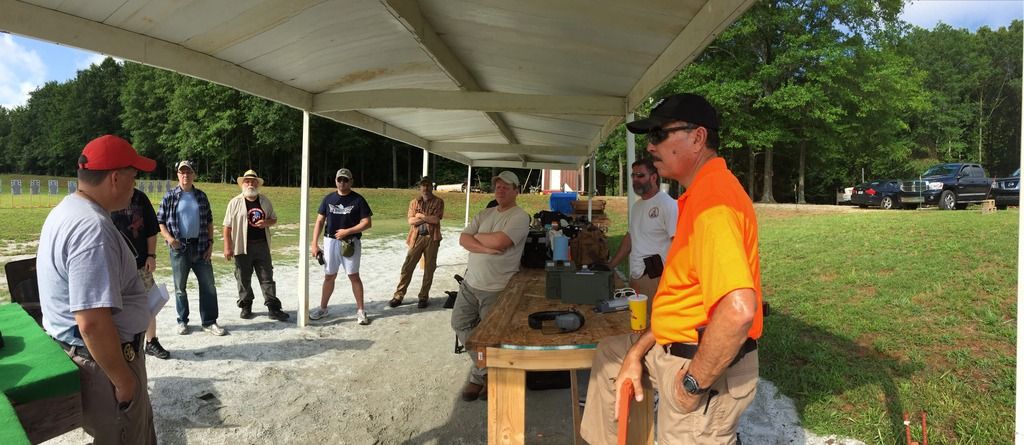 |
| Initial introduction and safety briefing. |
The class started off with the students moving to the three yard line with their pistols and holsters but no ammunition. This was the initial dryfire portion of the class in which the students were taught proper presentation of the pistol from the holster, proper reholstering, proper grip, trigger press, finding the reset point and using it during the follow up shot process, transitioning from the dominant hand to the non dominant hand safely, and trigger press with the non dominant hand.
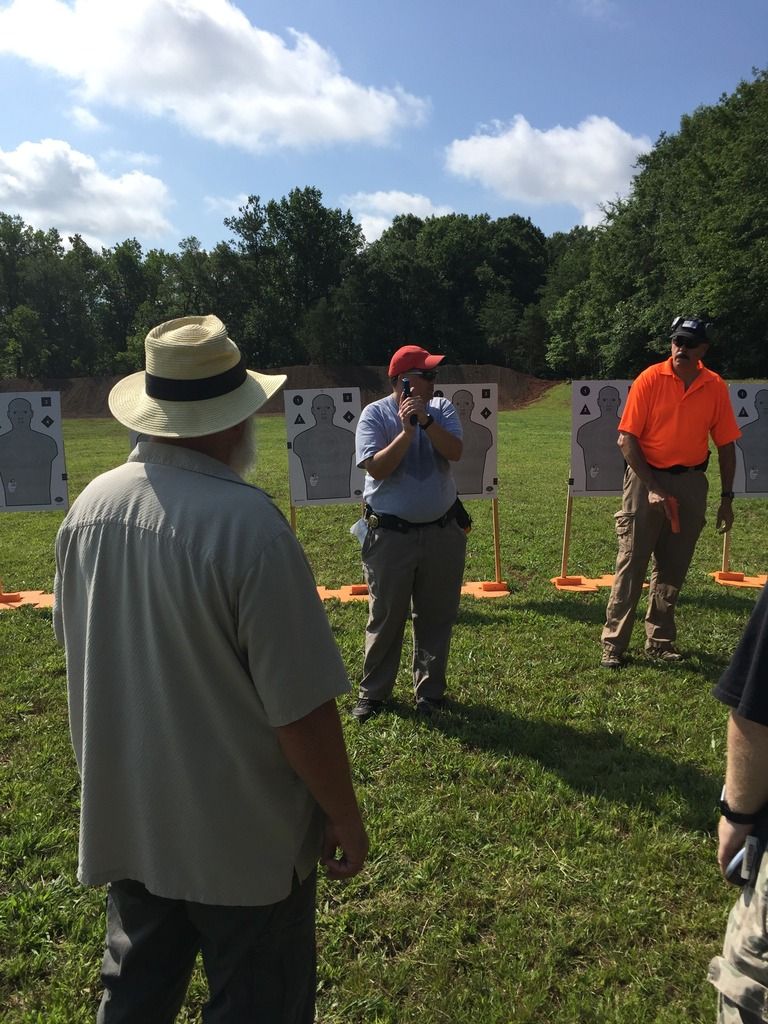 |
| Lee demonstrating proper grip technique with a non-functioning 'blue gun'. |
As the class progressed, Lee used the Crawl-Walk-Run training method to build upon skills learned in the prior block of instruction. Students quickly went from dry fire or dry practice to live fire. During subsequent blocks, skills learned in the previous block were reinforced as they were built upon. I can't stress the importance of that enough. All too many shooting classes quickly leave some students behind in an attempt to cram too much information in too quickly for some students to retain. Such was not the case here. Nor was it overly repetitive and monotonous.
 |
| Students working at the fifteen yard line from a kneeling position. |
This class was well put together and flowed smoothly. The heat was quite brutal on students and instructors alike with temperatures in the low nineties and the humidity near the same. Demonstrations with explanations as to "why" flowed into dry runs and live runs. At least one student had physical ailments and had to have assistance loading magazines on occasion. The crowning achievement of the class was that of the youngest student, a mere lad thirteen years of age who was taking his first formal class passed the FBI Qualification. That was with eight hours of instruction. FBI trainees have roughly eight WEEKS of instruction and still have a fairly high failure rate.
As I've mentioned before in regards to Lee's shotgun classes, this is a good class to take, regardless of your skill level.
A few technical notes for those so interested.
There were ten students.
One Instructor.
Two Assistant Instructors.
Eight striker fired pistols.
Two Traditional Double Action Pistols.
Eight 9mm's.
One .45 ACP.
One .40 S&W.
One student ran a WML on his pistol.
